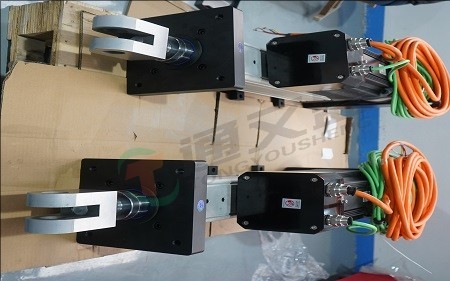High-thrust electric cylinders are typically equipped with high-power servo motors (with a power range of 5–100kW or even higher) and matched with high-performance drivers, enabling dynamic adjustment of output torque based on load requirements.
The "torque-speed" characteristic curve of servo motors is smooth; when combined with closed-loop control (which uses encoders to real-time monitor the lead screw position and motor speed), they can achieve "on-demand force adjustment". For example, during the press-fitting process, a large thrust is required initially to quickly approach the workpiece; after contact, the thrust is automatically reduced to a precise press-fitting value to avoid overload damage.
In addition, some heavy-duty electric cylinders adopt a dual-motor coordination or multi-stage transmission design to further enhance output capacity while maintaining control flexibility.

Heavy-duty working conditions place higher demands on the mechanical structure of
heavy-duty electric cylinders: the housing must withstand high stress, and the guide rails must resist deformation under heavy loads (such as the risk of sagging during vertical lifting).
Therefore, we use high-strength aluminum alloy/steel housings and match them with heavy-duty linear guide rails (such as roller guide rails or hydrostatic guide rails) to ensure that the slider does not deviate or jam during movement.
At the same time, the connection between the lead screw and the motor is reinforced with preloaded flanges or flexible couplings to prevent loosening or breakage caused by high-torque transmission. These detailed designs are the key to heavy-duty electric cylinders remaining "stable as a mountain" in heavy-load scenarios.
High-thrust output inevitably leads to greater energy loss; poor heat dissipation will cause motor overheating (resulting in derating) and accelerated lead screw wear.
In addition, key components (such as lead screws and bearings) are made of wear-resistant and corrosion-resistant materials (such as stainless steel or surface-hardened materials). Combined with regular lubrication and maintenance (some models support automatic lubrication), this ensures that heavy-duty electric cylinders still maintain stable performance during long-term heavy-load operation.
